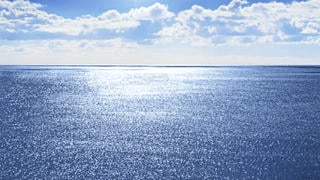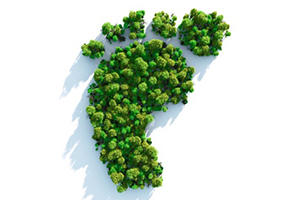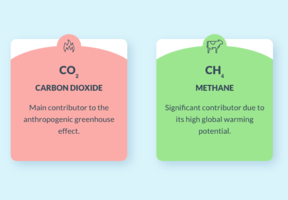Ocean Acidification: The Downside of Carbon Capture
Updated on 07.09.20215 min read
The amount of CO2 absorbed by the world's oceans and seas has increased over the decades. This would be good news if the process didn't also mean a galloping rise in seawater acidity that is threatening marine and, in the long term, the global economy. Humans have only indirect means at their disposal to rectify this situation.

© THINKSTOCK - Seawater is becoming dangerously more acidic as the oceans absorb more CO<sub>2</sub>.
Oceans cover 71% of the Earth's surface and absorb around a quarter of the CO2 released into the atmosphere. This absorption is realized through a series of interrelated mechanisms:
- Atmospheric CO2 taken up by the oceans dissolves into the seawater. This process is particularly effective in very cold water and intense winds.
- Phytoplankton absorb the dissolved CO2 through .
- Ocean currents mix the constantly renewed surface water and transport the carbon, which can end up in the deep ocean and seabed sediment.
The dangers of acidification
Although this process may seem like a positive factor in the fight against , it has a downside: as the amount of CO2 in the atmosphere rises, so does the amount dissolved in the oceans, leading to acidification.
When CO2 dissolves in seawater, it frees ions (H+) which lower the water's pH, making it more acidic. Solutions with a pH below 7 are said to be acidic, while those with a pH above 7 are basic (or alkaline). A pH of 7 is neutral.
Acidic water dissolves calcium carbonate, the essential building block used by many marine organisms to produce shells and skeletons through a process of calcification. Examples include plankton, mollusks, crustaceans and coral, which in turn are essential to life for millions of marine species. Acidification can also lead to the proliferation of certain types of algae, and although this may increase their ability to store CO2, excessive growth also disturbs the entire ecosystem.
Economic impacts
Given that marine micro-organisms are at the bottom of the marine food chain, all life in the ocean is affected. An estimated one billion people depend on seafood-based protein, and fishing represents a global market with an annual worth of $100 billion. Consequently, ocean acidification is one of the main international climate change issues.
Since the Industrial Revolution, ocean acidification has been advancing at a rapid pace, with the pH of surface water (which is basic) decreasing from 8.2 to 8.1 over the period. This 0.1 decline on the pH scale corresponds to an approximately 30% increase in seawater acidity. In 2100, this increase could reach 100 to 150%.
A number of phenomena are already being attributed to ocean acidification, notably along the U.S. Pacific Coast. Between 2005 and 2010, scientists observed a correlation between abnormal oyster larvae mortalities and the upwelling of very acidic water with low oxygen levels from the continental shelf towards the coast. To counter this problem, oyster farmers decided to let seawater in during the evening rather than in the morning, when the CO2 level is highest. But this type of empirical solution will not be enough if seawater acidity increases to the extent forecast.
Indirect solutions
Humans do not have a direct way to stem the phenomenon of ocean acidification. The only lasting solution is to release less CO2 into the atmosphere, even if the effects will not be felt for several centuries. Due to the enormous inertia of the carbon absorption process, greater acidification is inevitable.
To get the ball rolling, the international community needs to take action to strengthen and coordinate research so it can get a better understanding of the ecosystem changes caused by acidification. It also needs to refine data observation and recording. As part of this movement, an international team of scientists used satellites to monitor ocean acidification in February 2015.1
Experts also emphasize the importance of addressing other stress factors for the marine ecosystem, such as pollution, plastic waste and overfishing. Methods exist to increase the oceans' resilience and they should be used more effectively. Marine Protected Areas (MPAs), for example, help preserve biodiversity and improve the ecological state of the world's oceans.2



















